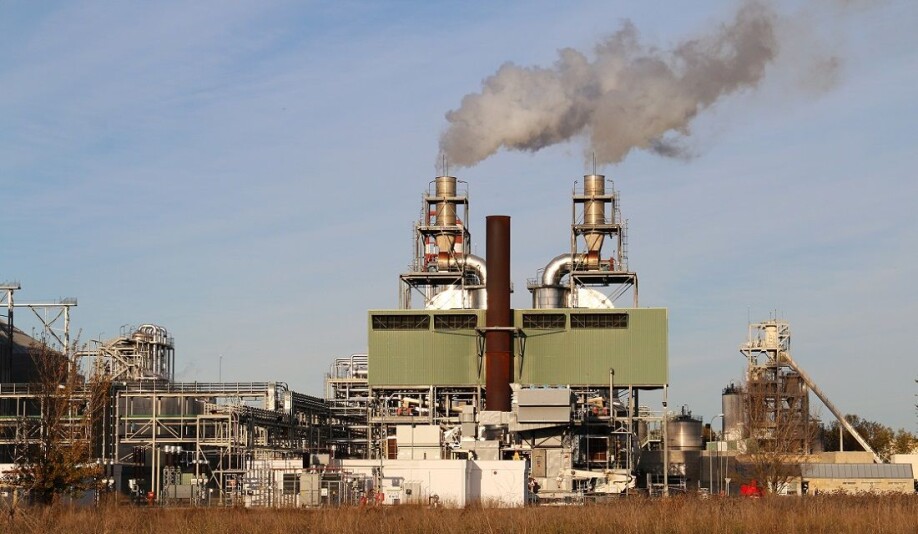This article is produced and financed by NTNU Norwegian University of Science and Technology - read more

Abandoned cropland should be used to produce biofuels
More biofuels could be needed to counteract climate change. But producing them shouldn’t diminish food production or wilderness areas. The solution may be to grow more grass on recently abandoned cropland.
Growing perennial grasses on abandoned cropland has the potential to counteract some of the negative impacts of climate change by switching to more biofuels, according to an NTNU research group.
Researchers consider increased use of biofuels to be an important part of the solution to achieve reduced CO2 emissions. But the production of plants for biofuels can have some unfortunate trade-offs.
Now, researchers at NTNU have come up with a scenario that would put less pressure on food production and plant and animal life.
“We can grow perennial grasses in areas that until recently were used for growing food but that are no longer used for that purpose,” explains Jan Sandstad Næss, a PhD candidate at the Industrial Ecology Programme at NTNU. These areas are usually still potentially cultivable and have the advantage that they are already connected to farms, which means that the infrastructure is in place and they are close to the markets.
The results from the study have now been published in Nature Sustainability.

Growing bioenergy crops controversial
Biofuels come in several varieties. Common to all is that plants are broken down and transformed into a product we can take advantage of in vehicles and machines, for example.
But corn, wheat, rapeseed and soybeans that become biofuels instead of food affect people’s ability to feed themselves, making the choice for biofuels ethically questionable. Wild areas cleared to grow biofuels can compromise biodiversity.
In many of the scenarios that the researchers explore, the production of biofuels would not compete with food production or wilderness, but would use cropland that has been abandoned due to more efficient food production or because plant foods replace more land-intensive meat production.
The least controversial option for producing biofuels is the use of waste from industry, agriculture and forestry, but this does not generate nearly enough.
If we use areas that already have limited value for other purposes, the cultivation of biofuels will become more attractive for more people.
Large areas available
Until now, we haven’t known the extent of available areas for this type of grass cultivation. Næss and his colleagues Professor and director Francesco Cherubini and researcher Otávio Cavalett investigated the question by examining satellite images from around the world.
“We found 83 million hectares, or 830 000 square kilometres, of areas that until recently were used for food production but now no longer are,” says Sandstad Næss.
These locations roughly correspond to the land area of Sweden and Norway combined, including Svalbard, or the equivalent of five per cent of the area currently used for food production worldwide.
These are areas that have been heavily affected by humans, so many species are already gone. Grass production could increase biodiversity.
What is the potential?
The research group believes that most of these areas can be used to grow perennial grasses for biofuels instead of leaving them unused by humans. However, there is a large variation in how much this can cover of future biofuel demand.
Biofuel production on abandoned cropland “could provide the energy equivalent of between 6 and 39 exajoules each year. This corresponds to between 11 and 68 per cent of today’s bioenergy needs and 2 to 47 per cent of the production of biofuels in 2050, given the assumption that we limit the temperature increase to 1.5 degrees Celsius,” says Cavalett. (See fact box.)
How much biofuel people can grow depends on many local factors and on how the areas are managed. Negative environmental impacts need to be weighed against the need for energy.
“We could generate around 20 exajoules every year if we increase land area by only 3 per cent and water use by 8 per cent. That scenario would mean we wouldn’t disturb areas that are especially critical for biodiversity or that require a lot of irrigation,” says Cherubini.
More advantages
The researchers believe that growing perennial grasses for biofuels would simultaneously revitalize rural areas and provide more sources of income for farmers.
But this option won’t happen by itself. Communities need to determine local climatic conditions and water availability, as well as local value chains and what kind of grass is best to grow there. These decisions therefore require that local and regional authorities collaborate to implement such a plan.
Reference:
Jan Sandstad Næss et.al.: The land – energy – water nexus of global bioenergy potentials from abandoned cropland, Nature Sustainability, 2021. Summary


































